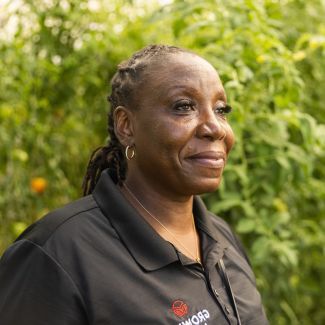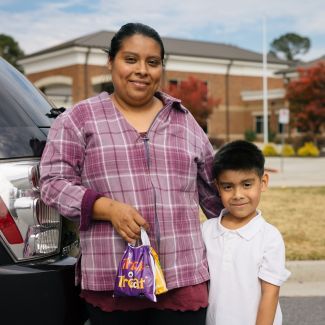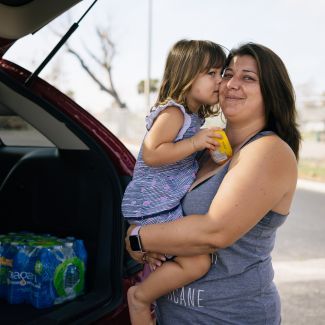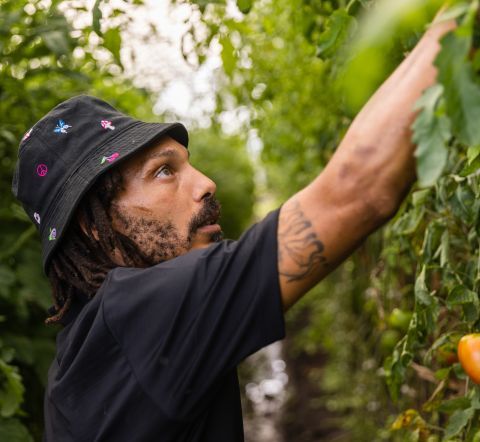


Hunger is a complex problem. We can solve it together.
We know that hunger is a complex issue, so we're tackling it from all angles. We're working to improve access to nutritious food, expand economic security, and advocate for policies that make it easier for people to get the food they need.
We’re part of a nationwide network of food banks, food pantries and community-based organizations in the United States working to create a future where no one is hungry.



An America where no one is hungry
We all deserve to have enough food to eat without worrying about if we can afford it. At Feeding America, we are working to make this a reality by:
-
Ensuring everyone can get the food they need with respect and dignity.
We are part of a nationwide network of over 200 food banks and 60,000 meal programs so people can access food without judgment or stigma.
-
Advocating for policies that improve food security for everyone.
We work with lawmakers to make it easier for people to get food by expanding access to food assistance programs.
-
Partnering to address the root causes of food insecurity, like the high cost of living and lack of access to affordable housing.
There is more to ending hunger than just food, so we partner with organizations to address underlying causes of hunger so people can thrive.
Working with local food banks and meal programs
When you support Feeding America, you are helping a nationwide network of food banks, food pantries, and meal programs provide resources so people facing hunger can put food on the table. Learn more about the network.
Feeding America works with the food industry to rescue food that would otherwise go to waste.
Network food banks collect, store, and distribute food to local pantries and meal programs.
The network's food pantries and meal programs distribute food to their communities.
How we end hunger

Food Access
In 2023, the Feeding America network distributed 5.3 billion meals through programs like mobile pantries and Kids Cafes to help people in communities like yours get the food they need to thrive.

Food Rescue
We work with food companies and farmers to supply food banks with food that would otherwise go to waste. In 2022 alone, the Feeding America network rescued 4 billion pounds of food and groceries.

Disaster Response
When disaster strikes, people experiencing food insecurity are often hit the hardest. As one of the nation's largest disaster relief organizations, we are there before, during and after a disaster to help communities get food and emergency assistance.

Hunger Research
To create the right solutions to end hunger, we must understand the people and communities facing hunger. Every year, Feeding America conducts research like the Map the Meal Gap study to learn more about food insecurity in local communities.
